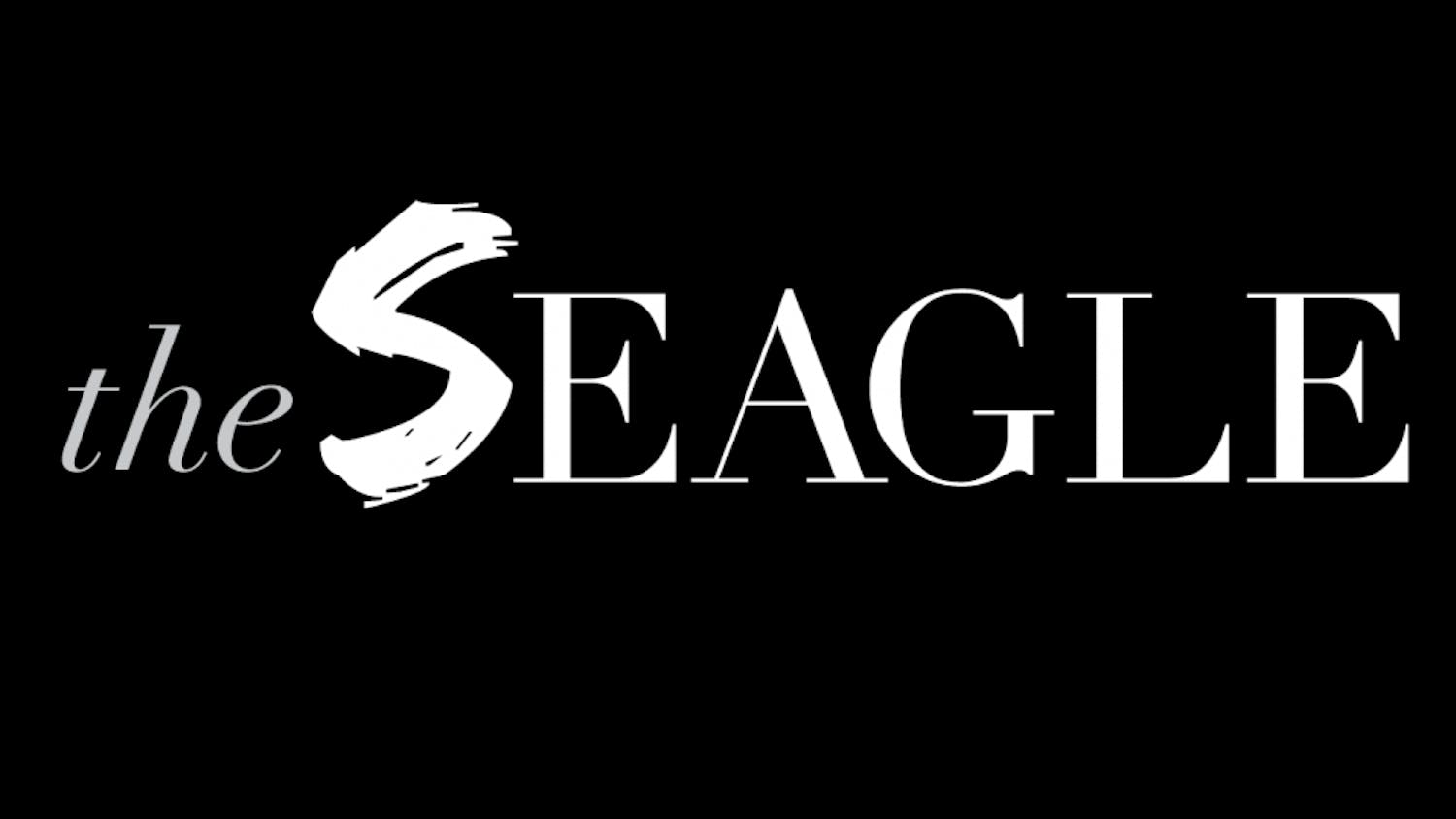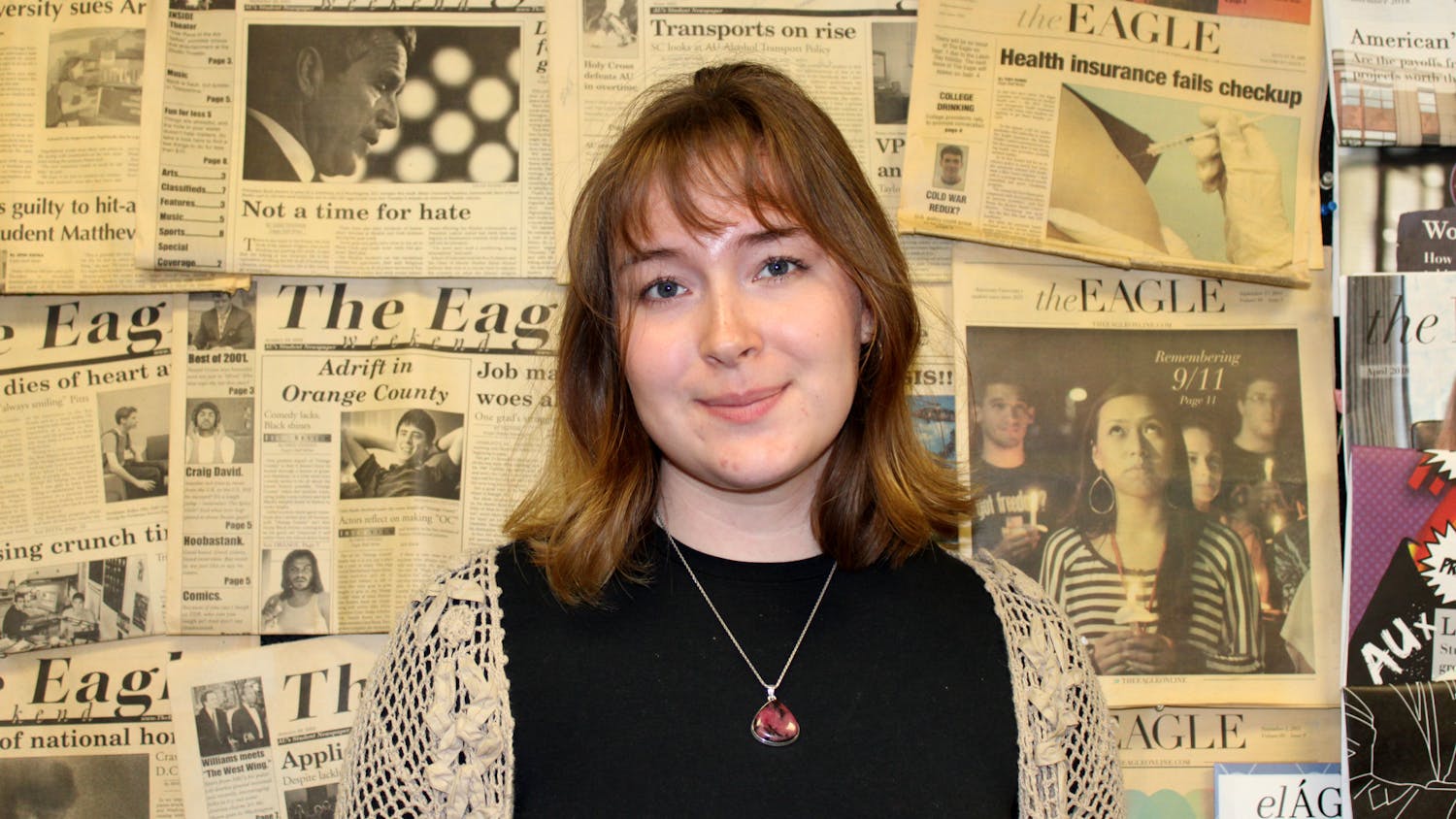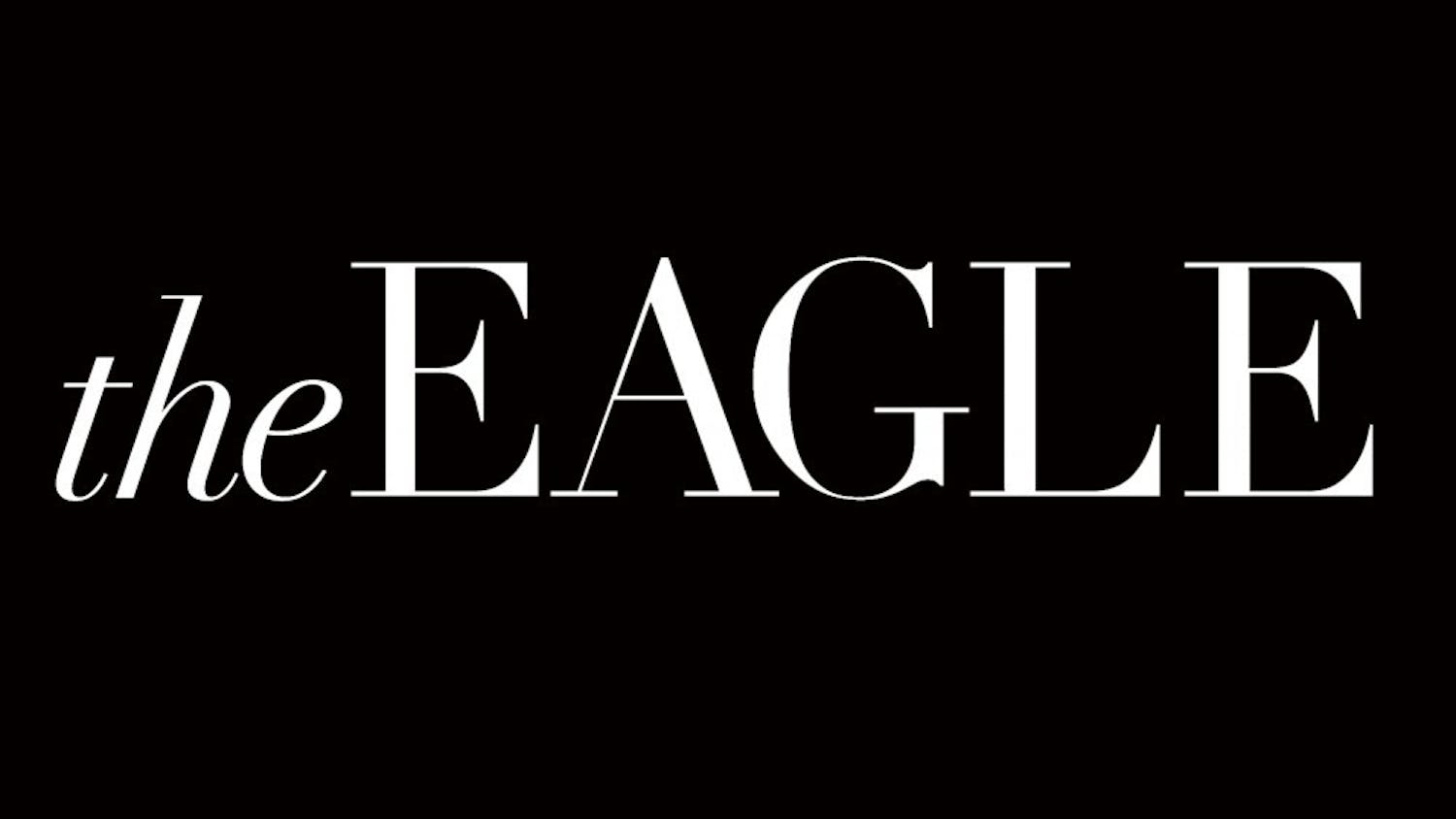|
ABOUT THE QUICK TAKE Every Friday, the Quick Take columnists will offer their views on an issue of significance to American University. Notable members of the campus community will also be invited to contribute to this feature. Suggestions for topics and other ideas from readers are welcome and encouraged, so please submit comments to edpage@theeagleonline.com. |
Election night is now over and people in both political parties are slowly recovering. This week, the Quick Take columnists recap election night’s media coverage, social media trends and changes in voter demographics.
Ethan McLeod
The true showdown took place on the air
Maddie Ecker
Social media heightens political party divide
Scott Weathers
The fight for youth and minority votes continues
The true showdown took place on the air
By Ethan McLeod
This past Tuesday, America waited patiently as its future was decided by the 2012 election between possibly two of the most nationally divisive candidates yet. Families sat in silence, campaign workers moved in frenzies to get voters to the polls and young people geared up to either celebrate or protest the outcome of the election.
But many may have noticed that the true showdown took place on air. News outlets vied for America’s hearts by trying to produce the most sound commentary and the most accurate reflections of poll results. How did media outlets spearhead the coverage of the election and turn their own reports into worldwide news? There is no certain answer for that, but each network undoubtedly added its own flavor to their coverage of the historical night.
NBC took an aesthetically rooted approach. The network’s program, “NBC Nightly News,” featured numerous images of an electoral map set up on the Rockefeller Center Ice Rink, depicting the state-by-state electoral votes for each candidate. Viewers watched in awe as New York was turned into a “Democracy Plaza” on the show hosted by anchor Brian Williams.
CNN appeared to take the cake for visuals, however. Collaborating with the Empire State Building, the news network turned New York’s tallest skyscraper into a lit-up spectacle depicting the race with blue and red LED lights. The “spire” served as a real-time tracker for viewers to gauge the total number of electoral votes for each candidate, with an assurance that the victor’s color would overtake the entire top of the building when the winner was announced.
FOX News’ appeal for viewers was highly concentrated in the controversial nature of its hosts and interviewees; particularly Karl Rove, a former member of President George W. Bush’s White House staff and an avid supporter of and donor to Romney’s campaign this year. Gov. Sarah Palin made an appearance as well, commenting at one point on the impending victory for President Barack Obama, that “this is a perplexing time for all of us.” Coupled with the shock value of Rove’s outright objection to the moment when various networks determined that Obama had indeed been victorious, as well as others such as NBC and CNN, Fox News surely put on a show in itself for viewers.
Times were less fortunate for ABC News, whose election coverage was stunted by a sudden loss of power in their studio in Times Square. Amidst perhaps the most pressurized half hour of the night in which the election was ultimately decided, program anchors Diane Sawyer and George Stephanopoulos fumbled in the dark in search of a way to continue their commentary on the polls and electoral vote results. If that wasn’t enough, viewers and Twitter users, were delighted to raise questions about Sawyer’s hilarious show as she stumbled over words and referred to the incumbent as “President Barack.”
The winner of the presidential election luckily proved to be a clearly defined decision, with Obama capturing the victory eventually with 303 total electoral votes. The question remains a matter of choice for viewers, however, as to who won out for the best election coverage this past Tuesday. Some might say NBC was the clear winner, with the highest viewership of any news network at 12.6 million total viewers.
But don’t let the numbers be the judge. With the variety of approaches to coverage on election night, the true winner for best network coverage can be left to the viewer’s choice.
Ethan McLeod is a junior in the School of Communication.
Social media heightens political party divide
By Maddie Ecker
Being a student at the most politically active campus comes with certain perks, especially during the presidential election. Over the past few weeks AU has been buzzing with political talk. Whether you are a Democrat or Republican, I am sure you made your opinions known and am sure that if we are Facebook friends, I probably read one of your angry tirades.
This election was broadcasted from all sorts of social networking sites like Twitter, Instagram and Facebook, to name a few. If you partook in the festivities at the School of International Service building on the night of the election, you noticed that there was at least one television screen was monitoring incoming tweets throughout the night. Facebook feeds were dedicated entirely to people’s opinions on the two candidates and, of course, the people of the party they opposed. Instagram was peppered with pictures of students at the White House.
While all these forms of media help bring attention to certain issues, I found that most people overstepped what social media sites are intended for and instead used them to tear down other people’s opinions and wage “open” war. While sites such as Facebook were invented to help people connect with each other, I highly doubt that Mark Zuckerberg planned on his masterpiece to be used to create political chaos.
I like being “in the know” about current events, and when I say current I mean minute by minute. However, I thought that the stream of angry opinions and intolerant attitudes demonstrated on election night promoted exactly what America needs to avoid: the divide between the two parties. If anything, Facebook should be used to promote the ideas of the Democratic and Republican parties, instead of being used to tear the opposing party down. Honestly, what does that kind of attitude do in progressing us further?
When it comes down to it, I do not think that posting anything anywhere contributes to actually getting anything done. Get up and get involved, but do it in a way that demonstrates respect for other people’s ideas and actually emphasizes your ideas.
Maddie Ecker is a freshman in the School of Communication.
The fight for youth and minority votes continues
By Scott Weathers
In all its tame predictability, the 2012 presidential election revealed more about the American electorate than any race in recent memory. Certainly, the campaign was intensely fought, but to anyone following presidential polls (or more specifically, Nate Silver’s 535 blog), the outcome was nothing new. More surprisingly, even though the 2012 election felt uninspiring and ugly compared to 2008, the re-election of President Barack Obama was a product of profound changes that should continue to affect American politics.
Most heartening, according to exit polling, a record 19 percent of the American electorate in 2012 was young voters who overwhelmingly voted for Obama. Now, only a superficial assessment of this fact would conclude that this represents a monolithic victory for the Democrats. Certainly Obama carried the youth vote handily, but past Democratic nominees like John Kerry and Al Gore performed worse among the youth vote. In order for this change to actually alter our political dynamic, Democrats must continue to nominate politicians that appeal to younger voters.
The same goes for minority representation. With Romney failing to capture any substantial portion of the Latino or African-American vote, Republicans are understandably fearful for their party’s future. But Democrats would be short-sighted to assume that these groups will continue to support their party without meaningful legislation and relevant candidates.
All of these factors combined for an Obama victory, even in the face of an opposition that backpedaled on most unpopular Republican positions. A Romney victory looked most plausible immediately after his first debate victory when he adopted more moderate positions. Still, this swing to the center was not enough to overcome demographic changes, Romney’s positions during primary season and effective campaigning by Obama.
After the 2008 election, I was confident that Obama’s messaging would resonate through our political system, producing a more liberal, cooperative consensus. GOP victories in 2010 proved me wrong. I was mistaken in assuming that the dynamics of our political campaigns could permanently change a bitter culture in Washington. However, I can say that despite the lack of inspiration, change and optimism in 2012, there is reason for modest, humble hope for America’s political future.
Scott Weathers is a freshman in College of Arts and Sciences.




